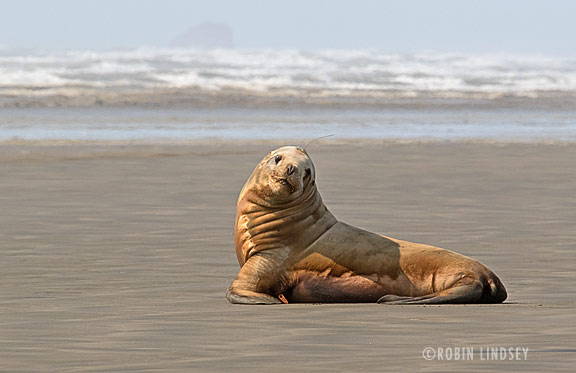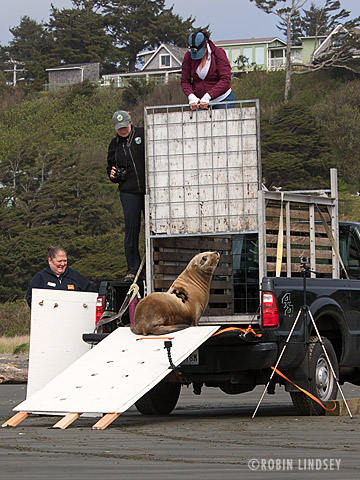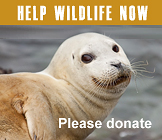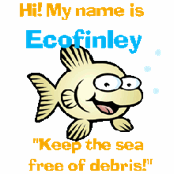Leo-Henderson
Steller sea lion pup goes back home to the wild
Apr/19/15 11:28 PM

Late Thursday night, two Marine Mammal Stranding Network teams piled into pickups and hit the highway - one in California, headed north and the other in Washington, headed south - with the intent to rendezvous in southern Oregon at 6am Friday morning. Why? To transport and release a rehabilitated Steller sea lion pup, rescued many months before in the Pacific Northwest and rehabbed at The Marine Mammal Center in Sausalito.
Finally, at 2:30 Friday afternoon, the bleary-eyed Washington contingent (consisting of WDFW biologist Dyanna Lambourn, her intern and grad student Erin Dagnese and PAWS Wildlife Center naturalist Jen Mannas) drove onto the sand at a Moclips beach. In a large cage on the back of the truck, the animated pup soaked in the smell and sounds of the Pacific Ocean. Thanks to this tremendous joint effort, he was back home and soon to be free.
Last fall, the 4-month-old male pup stranded on the beach at Ocean Shores. On October 3, 2014, a group of people illegally dragged the helpless, weakened pup a long distance back to the water.
When Ocean Shores Police Department Officer Henderson arrived on the scene, he found the unresponsive pup rolling in the surf. Quickly, he rescued the pup from the waves so he wouldn’t drown. WDFW Marine Mammal Investigations responded and the animal was taken to WDFW’s facility where he was hydrated, stabilized and observed overnight. Weighing only 31kg (about 68 lbs), he was terribly emaciated for his age.
The following morning, the pup (nicknamed Henderson) was transported to PAWS Wildlife Center in Lynnwood for short-term rehabilitation. In mid-November, he was flown courtesy of the Coast Guard to The Marine Mammal Center (where he was nicknamed Leo because of a name conflict) to complete his lengthy rehab and recovery and enable critical socialization with other animals. It’s not uncommon for a Steller sea lion pup to nurse on mom’s milk for one - three years. Separated from his mom for unknown reasons, Leo Henderson needed to pack on weight and learn to survive on his own.

As everyone manned their positions, the cage gate was lifted open and the stout, golden pup emerged, sporting a satellite tag to track his travels and identification numbers “35” dyed onto his side. After surveying the situation, he leapt from the ramp. A couple of u-turns later, he eventually lumbered across the wide expanse of beach toward the ocean.
Resting briefly at the water’s edge, he turned to look back at those who had given him a second chance at life. Leo Henderson then bounded into the surf. His head popped up periodically as he navigated a series of crashing waves - and then he was gone. The dedicated team stared out into the vast Pacific. It had truly been a long road for Leo Henderson.
Because of the satellite tag temporarily glued to his fur (it will be shed along with the dyed id numbers during the molt of his coat), you can follow his movements along the Pacific Coast here. The data will help researchers learn more about Steller sea lions. The pup is a member of the Eastern stock of Steller sea lions which were recently delisted as threatened from the Endangered Species Act. The population is rebounding, but still recovering. Check back for updates on his travels.
Thanks to everyone involved - NOAA (special kudos to Kristin Wilkinson), WDFW, United States Coast Guard, PAWS Wildlife Center and The Marine Mammal Center - for your extraordinary efforts to save this special pup.







